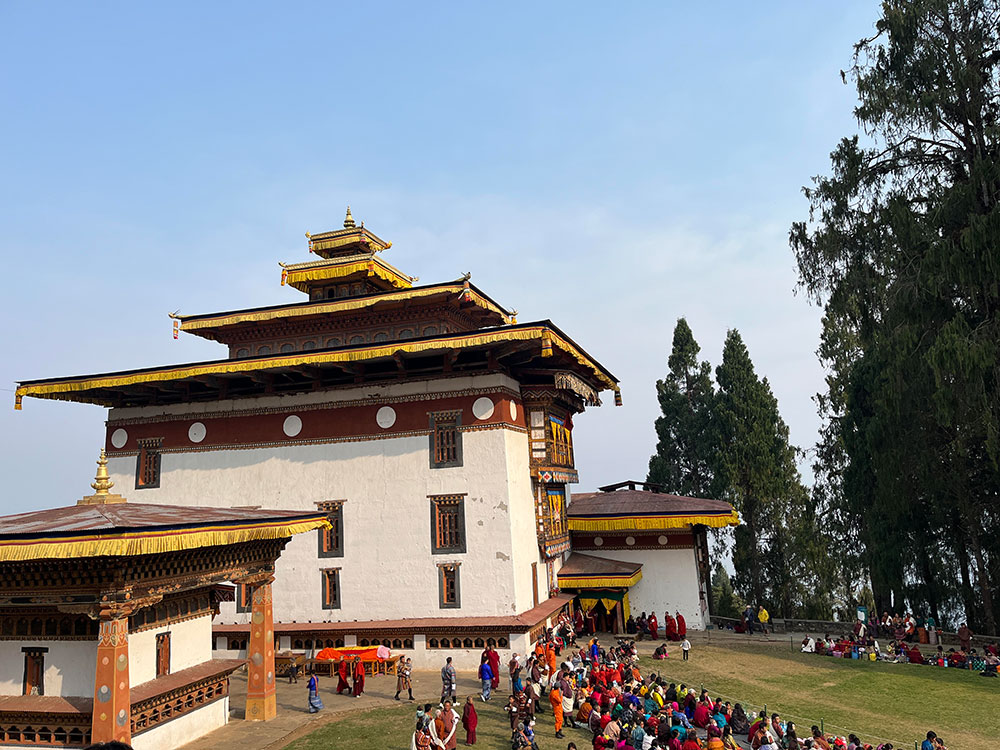Chencho Dema
The Talo Tsechu drew large crowds of both local and foreign visitors, becoming a popular festival observed during the month of March in the country, according to the locals.
For that matter, the popular Talo tshechu also drew crowds from the neighboring dzongkhags. As a result the Talo Goenpa was emerging as a popular tourist destination, drawing hundreds of visitors who come to witness the Talo tshechu held from March 17 to 19. While tourists were permitted to enter the courtyard of the Goenpa, access inside the monastery itself was restricted.
Sonam Norbu, the Tshogpa of Talo said that during the tourist season, three to four buses filled with tourists arrive to visit the Goenpa, while a minimum of 20 local visitors come every day.
“To maintain the cleanliness and tranquility within the Goenpa premises, and to preserve the sanctity of the space, photography is not allowed, and tourists were not permitted to enter,” he said.
The three-day celebration was renowned for its captivating mask dances and classical performances, especially by the talented Talo women troupe. Each day of the festival concluded with the rendition of the three songs of Mani-sum, featuring the mesmerizing Zungdra set.
Beyond its religious importance, the festival served as a cherished occasion for villagers and families to unite and celebrate together.
Situated an hour’s drive from Khuruthang town in Punakha, Talo, at an elevation of 2800 masl, is a picturesque hamlet with lush mountainous surroundings. It is home to Talo Sangacholing, popularly known as Talo Goenpa, regarded as an important religious and historical monument in the country and in Punakha valley.
The monastery was closely associated as an important Drukpa Kagyu Monastery and with the mind-incarnation of Zhabdrung Ngawang Namgyel, the founder of the nation-state of Bhutan in the 16th century.
The Goenpa was founded in 1767 by Chogtul Jigme Singye (1742-1789), the 18th Druk Desi, and expanded by Zhabdrung Jigme Drakpa II (1791-1830), the third mind reincarnation of the Zhabdrung.
According to local residents, Talo Goenpa stands out as one of the most frequented destinations, not only during auspicious occasions where visitors flock to the monastery to present their offerings, further enriching the spiritual importance and sacredness, but also as an ideal spot for a brief getaway.
Many cherish the opportunity to embark on a short trip to the monastery, relishing the chance to enjoy a picnic lunch while gazing over the breathtaking vistas of Punakha Valley.
The monastery continued to flourish as a spiritual center under Zhabdrung Jigme Norbu (1831-61), Zhabdrung Jigme Chhogyal (1862—1904) and Zhabdrung Jigme Dorji (1905-1931).
Also, the abode of the powerful deity, Gyelchen Kuentu Zangpo or simply Talo Gyep, the three-storied monastery depicts exemplary Bhutanese architecture and houses numerous statues and relics of profound significance.
These included the sacred Machen of Zhabdrung, the statue of Amitayus (Tshepamed), the temple of the 16 Arhats (Neten Chudruk), and Namsey Tsherim which were publicly displayed only once a year.
With a commanding view of the Punakha valley, the monastery also has a monastic institute.


